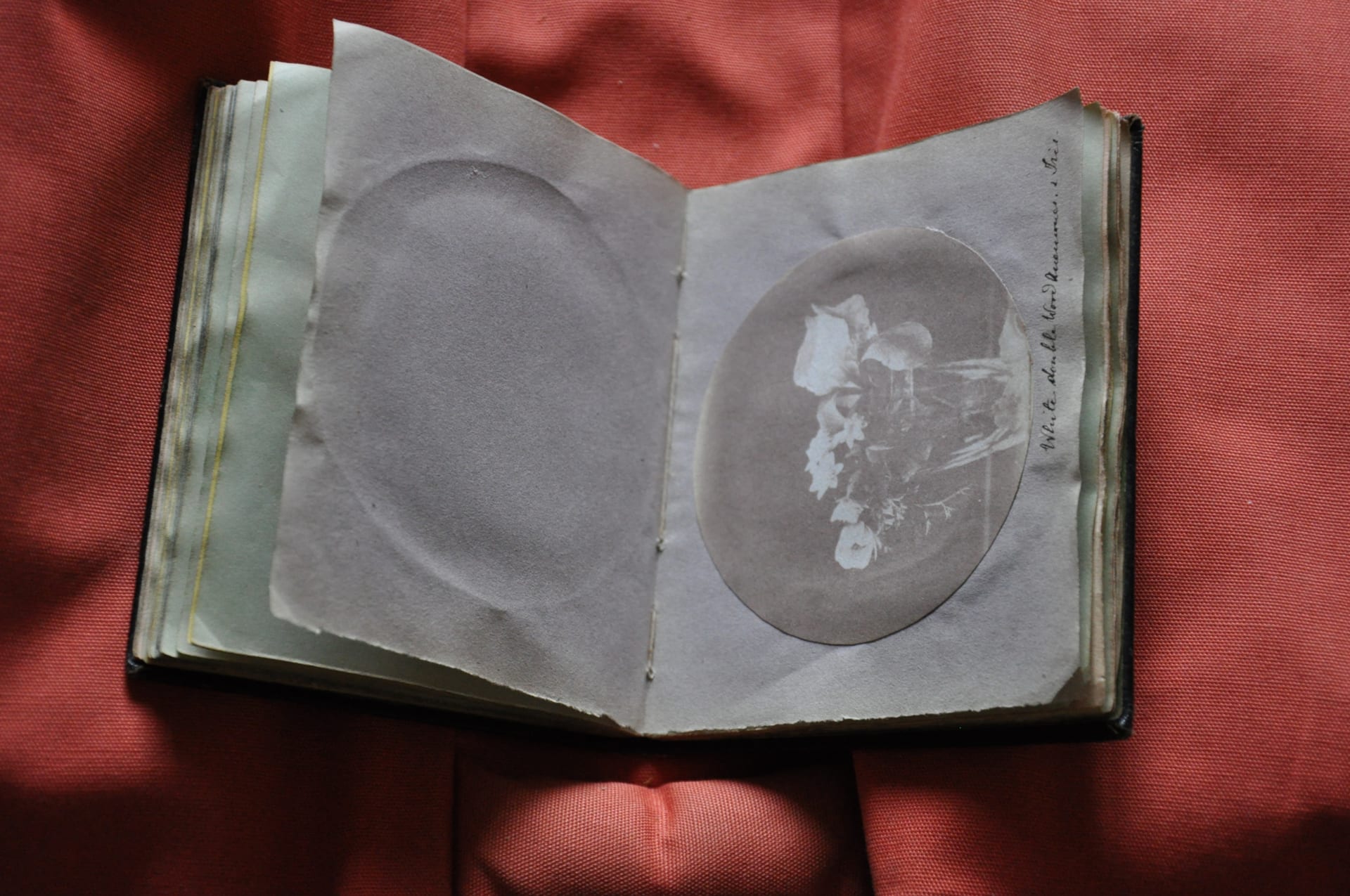Image: Mary Dillwyn, The Llysdinam Album (Wisteria/ 15), ca. 1853-1857. Photograph in leather-bound album, 95mm x 78mm (Llyfrgell Genedlaethol Cymru / National Library of Wales)
Dissertation Title: The Role of Floral Arrangements in Early Photography: Photographs by Mary Dillwyn in the Llysdinam Album and the Mary Dillwyn Album in the Archives at the National Library of Wales
[Dissertation extract]
The photographs by Mary Dillwyn in the Llysdinam Album and the Mary Dillwyn Album establish her as a thoughtful witness to family life and garden culture in Victorian Wales. Whilst the Mary Dillwyn Album might be considered in terms of its domesticity as a gifted, carefully designed photobook that depicts family life, the Llysdinam Album should be appreciated differently. An unfinished yet detailed study of Mary’s photographs that she made, the Llysdinam Album offers an important view of how she wanted her work to be understood. The abundance of flower studies in the Llysdinam Album presents Mary as a photographer who was enamoured with the floral form. An analysis of the relationship between women and nature in the nineteenth century reveals how this might be understood in terms of Mary’s femininity. However, a close observation determines that flowers also provided her with a vital means to experiment with form and light beyond their cultural meaning.
The presence of Mary’s photographs in the album locates them in an established creative practice of middle-class women in the nineteenth century. Though Mary’s photography represents her desire to step beyond the domestic, the women’s space of the album bounds her work to the home. Observations of Mary’s photographic work in the two albums raise the question of whether women in the history of photography should be read in terms of their femininity. The fact that Mary gave up photography in marriage suggests that she is defined by the fact that she was a dutiful Victorian woman whose creative practice could not take precedence.
Mary’s flower studies in the Llysdinam Album and the Mary Dillwyn Album, whilst being factual and documentary, express clear artistic intent and cultural meaning through their engagement with still life conventions. The way in which she conveys the temporariness of nature with a softness that evokes photography as art reveals a sensibility that reflects Victorian moral values and a highly considered approach to the new invention of photography. Moreover, although her manipulation of the medium is limited, she nonetheless experiments with the calotype process in a way that can only be described as artistic, or at least engaged with the notion of art and its pivotal function to serve as a reminder of temporality and death.
At the end of her book The Victorians and their flowers, Nicolette Scourse observes,
Part of the interests of tracing through the attitudes from another age is to compare them with our own. In some aspects we still view flowers and nature in very much the same way as the Victorians…ultimately the attitude to flowers and nature in any age reflects man’s attitude to fellow man[1]
Mary’s flower studies find the contemporary viewer at a moment in time when nature is long past the threat of Industrialisation that it faced in Mary’s life. Flower studies today represent an appreciation for the small natural forms at risk from climate change. Mary’s flower studies still hold value today as gentle reminders of the beauty of nature and the temporariness of life.
The abundant flower studies of Mary Dillwyn provide a precious view of what it might have meant to be an early female photographer. These photographs also evoke a very human propensity for adoring natural forms and feeling compelled to hold onto them in photos.
[1] Nicolette Scourse, The Victorians and Their Flowers (London: Croom Helm, 1983), p. 183.

